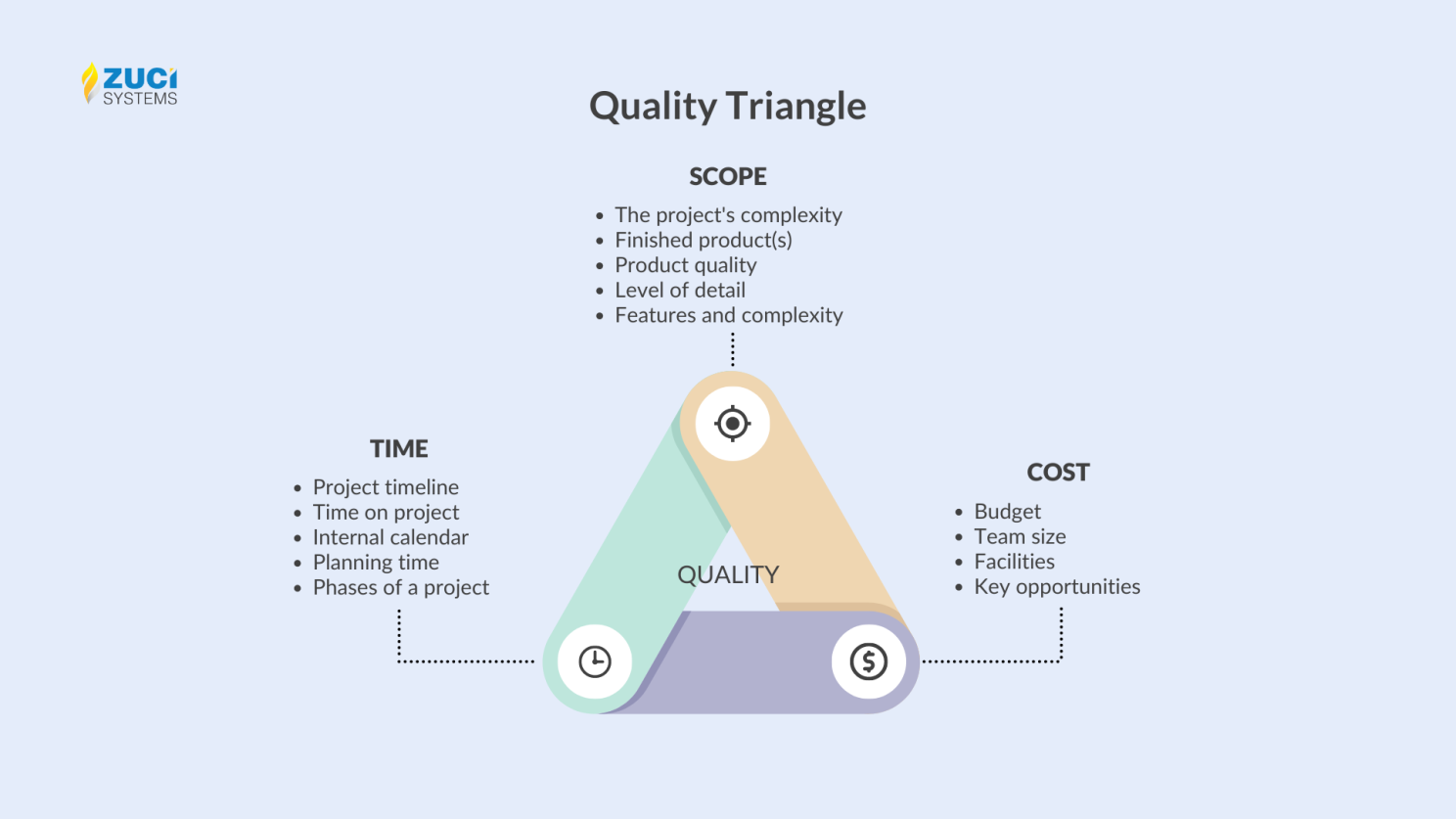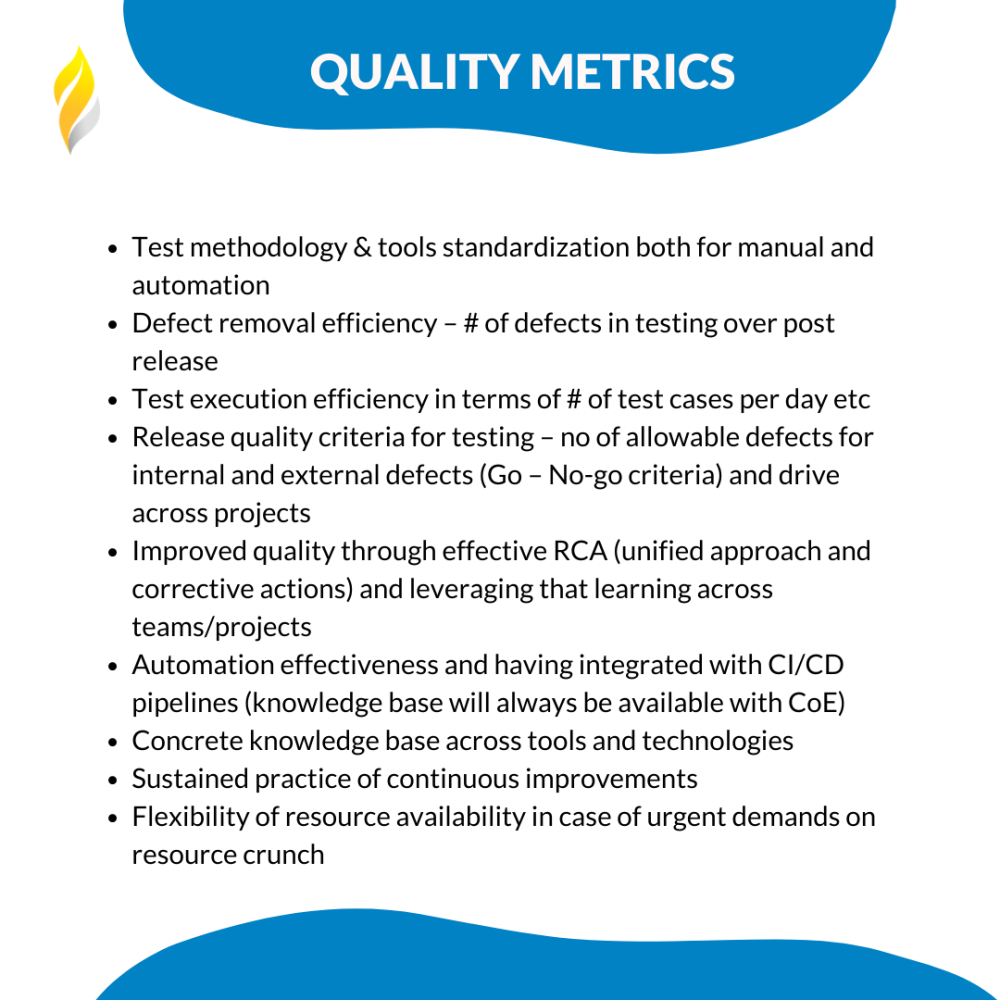As per Forrester, “IT organizations looking to improve their testing practices often opt to centralize some or all test-related activities in a Testing Center of Excellence (COE).
Let’s face it!
IT application landscape is going through changes at the speed of light.
Testing teams always are in the heat to get testing done faster to assure software quality that will ensure flawless CX.
Think about it. In today’s agile world, old-school testing practices just don’t cut anymore. Scrum-driven STLC requires to keep up with the challenges in constantly delivering software that keeps evolving for various reasons.
With the pressure to deliver software that’s on time, solid, and efficient, it’s no surprise that more and more teams are turning to the idea of setting up a Test centre of excellence (TCoE) to stay cooperated, successful and competitive.
TCoE is a centralised centre that employs standardized testing procedures, automation practices, metrics and tools. It aims to manage the utilization of resources efficiently to maintain a desired level of quality across all the applications, both prior to and after deployment. Furthermore, it provides clear insights and visibility into the quality of any software system or project, thus helping IT leaders make informed deployment decisions based on the level of business risk.
But what are the benefits of TCoE in today’s agile software world, its prerequisite, and how does it help achieve an organization’s QA maturity?
We’ll get to know these in this edition of Z to A Pulse.
TCoE in today’s Agile world

Hello readers, Welcome! This seventh edition of Z to A Pulse monthly newsletter is brought to you by Keerthi V, Marketing strategist at Zuci Systems.

I took up the above-mentioned topic with Dhanalakshmi Tamilarasan, SDET Manager at Zuci Systems and our client’s favourite test automation architect.
Now into the topic…
Keerthi: Dhana, tell me the significance of TCoE in today’s agile world.
Dhana: The Testing Center of Excellence (TCoE) is like a virtual command centre for testing in an organization. It helps teams standardize testing processes and implement best practices using innovative tools. The TCoE effectively manages a flexible and highly skilled workforce to ensure cost-effective, high-quality deliverables with improved efficiency, and reduces reputational risk.
If you look at our clientele, majority of them have multiple scrum teams, and helping them set up a TCoE allows to quickly deploy testers to any team while maintaining QA principles and processes.
Our TCoE is a combination of both manual testing (web, mobile, API), automated testing (using open-source or licensed tools), and performance testing, which helps deliver high value on our clients’ QA investments.
TCoE also helps different teams and lines of business collaborate better, shifting the focus from just testing to a more holistic approach of quality engineering. Essentially, this team helps organizations achieve a higher level of QA maturity and offers the benefits of scalability and robustness of the QA function within an organization.
Keerthi: Interesting. Can you walk me through the prerequisites for a TCoE?
Dhana: Before thinking about incorporating a TCoE, a test architect should ask himself/herself the following questions and if it’s a “Yes”, then TCoE will make more sense to the organisation.
- Is your QA not associated with the organisation but with project objectives?
- Are you facing challenges in onboarding the right resource at right place?
- Is your QA process not transparent to everyone?
- Without comprising the quality, do you want to reduce the test turnaround time?
- Do you want to establish a standard QA process for your organization?
- Are the organizational processes and tooling across teams not centralized?
- Are your resources not updated with the latest trends in the world of testing?
- Does the team not having the supporting mechanism to share\reuse the assets\knowledge\infra?
- Is your project team reinventing the wheel too often?
- Can the testing efficiency be measured across the projects in your organization?
- Do you want to identify the common testing KPIs?
- Is the cross functional team collaboration not happening regularly?
When testers are working on individual project teams and reporting to their project managers, it can be tough for them to share a common goal or direction. Also, their efforts may not have much of an impact. Testing approaches and strategies can vary from team to team, making it hard to standardize testing processes and practices across the organization. Without test process standardization, different testers may track different KPIs and metrics, and it can be challenging to share proven practices and tools.
So, with this kind of decentralized structure, it can be tough for different teams to see and learn from each other. This can lead to a waste of time and effort, as testers may end up repeatedly solving the same problems without realizing that someone else already did it.
To hit the sweet spot of the Quality triangle (Scope, Cost, Time), you need TcoE, a centralized testing platform that standardizes testing processes and makes the most out of testing resources. It brings everything together – people, process, knowledge, infrastructure, tools, and technologies – to tackle these challenges and achieve excellence in testing functions.

Getting buy-in from the whole organization can be tough, and it’s definitely a big commitment. Setting the right direction, prioritizing efforts and tasks while implementing a TCoE can be challenging!
Keerthi: Dhana, give me a quick walkthrough of the TCoE set up
Dhana: First, a quick assessment of the current business scenario and the testing practices
Take a closer look at:
- Creating a plan for implementation
- Setting up a governance model
- Identifying key things like frameworks, tools, and processes
- Setting up communication channels
- Putting it into action
- Stick to the objectives while creating a roadmap
- Design and set up an efficient TCoE
- Make sure you have the right tools
- Think about the approach
- Roll out the TCoE across the entire company
Keerthi: How does TCoE help organizations achieve QA maturity?
Dhana: Ok, QA maturity and TCoE complement each other and are mutually inclusive.
Organizations have fair QA maturity if they are tracking the Quality metrics such as:

Keerthi: In your opinion, do all organizations really need to set up TCoE?
Dhana: Not necessarily. It may complicate process for certain team sizes. Teams should consider having TCoE only when the above-mentioned prerequisites are met.
Setting up a centralized unit like TCoE might seem daunting, but like all good things, it’s worth the initial time, resources, and effort.
The benefits it offers in return for the investments are well worth it. Some of the other perks of TCoE include increased agility in QA and a continuous development process driven by metrics.
Keep in mind that setting up a TCoE requires change, support, and commitment from top management.
Keerthi: How do you keep TCoE up and running? How do we show the effectiveness of TCoE to the C-suite?
Dhana: Having TCoE in place is a must for any new program that’s being planned in the organization. It allows for a unified test approach, process, and standards from the get-go. Plus, TCoE allows for different skill levels within the same team, making it easier to cross-train and keep everyone on the same page when it comes to testing processes.
Effectiveness can be measured with defined metrics, determining KPIs across organization rather defining it project by project. This also helps testing service providers to take the learning from one client to other to improve overall efficiency.
Effectiveness of TCoE can be visualized as something like the following:
- One unified team for testing across organization
- Having a common metrics & KPIs across projects for better measurement
- Cross skilling becomes easier and resource rotation will be effective.
- Knowledge transfer to new members becomes easier and can be handled in single repository
- Knowledge sharing paves the way for more effective continuous improvement
- Reduced technology risks, and increased pace of innovation.
- Higher staff job satisfaction through greater career path opportunities, elimination of highly repetitive tasks and greater focus on higher value-added activities
Implementing a TCoE may seem overwhelming, but the return on investment is worth the effort. By standardizing testing processes and optimal utilization of testing resources, companies are able to report positive shifts in quality and many constructive changes in their organizational culture.
If you’re embarking on the journey towards centralizing your software quality efforts, Zuci will provide targeted services to make the transition faster, easier and more efficient for you. Together, we can help your QA organization achieve operational excellence and help you deliver business results.
Question For You:
What are the biggest challenges you face in transitioning to TcoE model?
Let us know your comments or suggestions below. Please “Subscribe” to receive future editions highlighting some of the most exciting topics across engineering excellence.
Thank you for reading!

